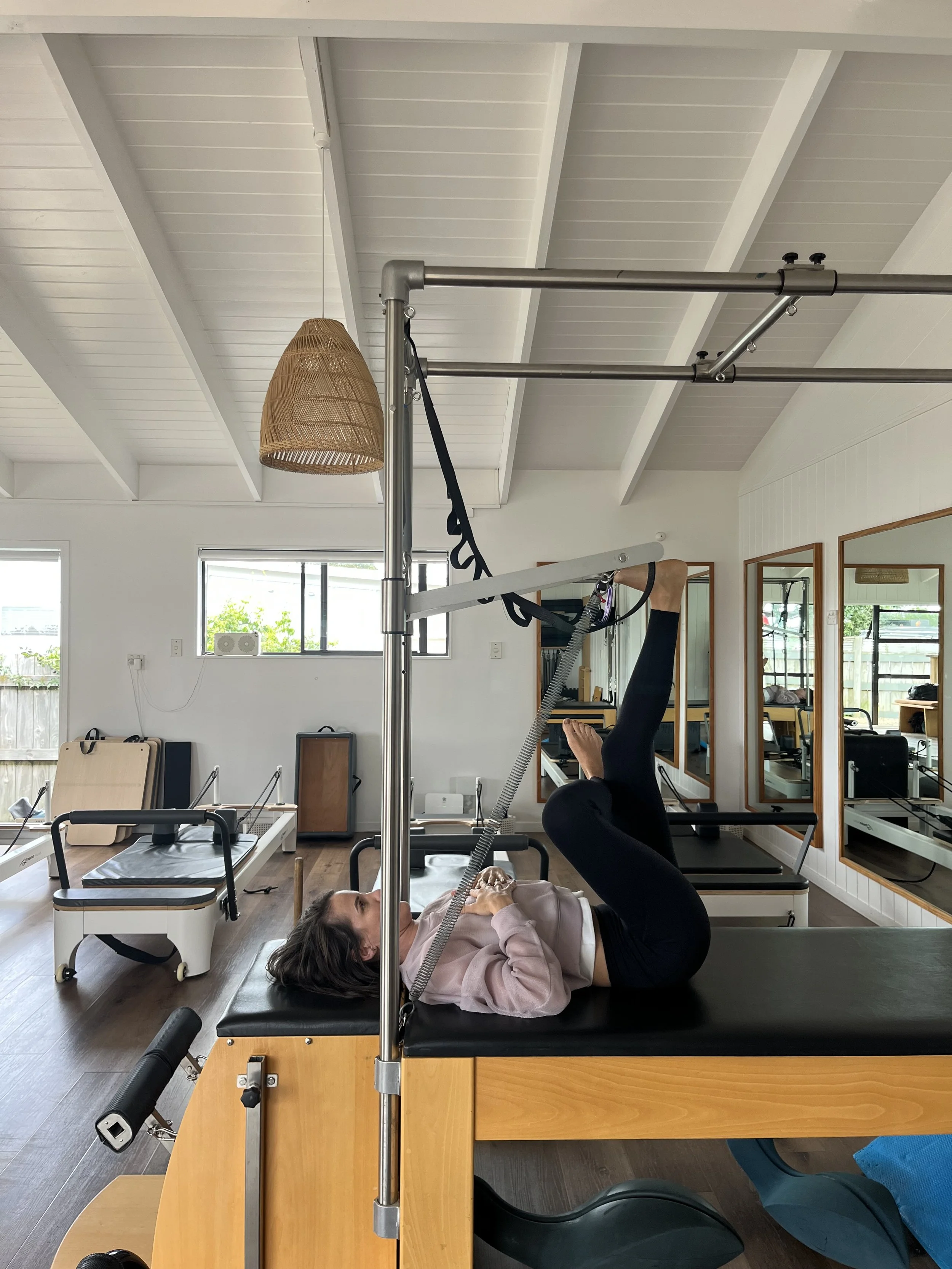to stretch or not to stretch?
When we think of stretching, we often picture holding a position for a few seconds before exercise. However, research now shows that static stretching (holding a position without movement) before physical activity can actually increase the risk of injury. That’s because it temporarily relaxes the muscles, tendons, and ligaments that support and protect your joints.
Instead, static stretching should be treated as its own form of exercise—best done separately, such as in the morning or evening, and held for at least 40 seconds to create real, lasting changes in flexibility.
Before exercise, dynamic stretching is a better option. Dynamic stretches involve movement—like controlled swings or reaches—that increase blood flow, activate muscles, and prepare your body for activity.
This is where Pilates makes a real difference. Pilates helps you not only stretch, but also stretch and release. The secret lies in one of Pilates’ key features: the use of springs. The tension created by the springs mimics how your tendons and ligaments naturally work, allowing your muscles to lengthen and release at the same time.
Clients often describe this as “feeling longer” or “looser” after class—and that’s exactly what’s happening. The guided, controlled movement in Pilates promotes dynamic stretching, helping your body learn how to move more freely and efficiently over time.
Next time you’re in class, notice how each push and pull on the reformer allows you to go a little further or feel more ease in your movement. That’s your muscles adapting, lengthening, and releasing through controlled dynamic stretching.
In summary:
Avoid static stretching before exercise.
Save static stretching for a separate session, morning or evening, and hold for longer.
Use dynamic stretches to warm up.
And for the best of both worlds—choose Pilates to safely stretch, release, and move better every day.
- Laura Cunha

